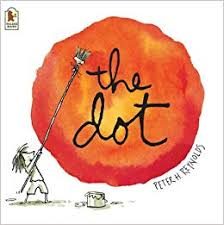
Visual arts allow simple texts like as above to be brought to life. Just by adding a little colour or animation can really allow pupils to gain a better understanding of their work rather than just reading boring plain texts. Making your texts visible allows pupils to be more engaged with their work. It can also shorten the learning process for learners as they are able to comprehend the work load more easily (Jandhyala, 2017).
This activity was fun to complete as it allowed me to observe how easy learning would be if we could make our literacy lessons more visible. When reading the article above I didn’t have a lot of knowledge or understanding about it however after I starting scribbling some annotations down beside key aspects of the article I gained a lot more knowledge from it than I had at the start. It was definitely a good resource you could use in the classroom to try and make your literacy lessons more appealing to younger people. The lesson allowed me to gain creative and problem solving skills when I was able to come up with ideas of images that links with the words in the article.

Today’s Art session was all based on the children’s story “The Dot”. The story was based on a little girl called Vashti and how she kept telling herself that she couldn’t draw. Her teacher encouraged her to continue drawing and not to give up on herself.
https://www.youtube.com/watch?v=t5mGeR4AQdM – The Dot Video Link
This indicated ways in which I as a teacher can try and encourage art within the classroom. It is important that as teachers we don’t convey the wrong messages to our pupils. Although we may not like drawing or not very good at it, we should always try to be positive about drawing so pupils are encouraged to “make that mark”. By being positive about the arts and keeping an open mind it allows pupils to gain better confidence in the subject and also through themselves (Hault, 2012).
Our task was to create marks with our hands and paint on a plain piece of paper. When looking at these marks we were asked to then flip the page around and upside down to see what we could draw around the marks to make a picture. Here is my sheet of paper:


Our drama session was based on the picture above. The picture represents a Tenement flat in the West End of Glasgow during winter time. Tenements like these were more used within the 1960’s era. They were built in urban areas for those people who were mostly likely to be in the manual labour industries. Within the flat there would be 8-10 families who would all have their own flat/house however had to share the communal toilet which at this time was outside in the back garden for the majority of these tenement flats (Cairn, 2017).This session allowed me to reflect on how important your behaviour can be on a pupil. As mentioned before, if you state that you aren’t really a fan of art or anything messy then there is more of a chance that pupils will not be engaged in Art lessons and will feel that they aren’t very good at it themselves. Art allows pupils to gain creative and imaginative skills that allow them to express their thoughts and feelings through drawing ( McAuliffe et al, 2007).

In small groups we created small drama scenes that related back to the tenement flats. For example, our group created a scene based on waking up on Christmas morning but the kids didn’t get any presents because the dad lost his job.
We used three drama conventions throughout this short scene these were:
Flash forward => Were you move the scene forward as if it is in the future.
Flash back => Were the scene goes back in time like the past or rewinding the scene to whatever happened in order to get to where they are in the scene.
Freeze Frame => When you create an image that indicates to your audience what is going on in that scene.
This session allowed us to think about the horrible situations people lived in during that generation and how disappointed some kids must have been. The scenario was good to use and it allowed us to put true emotions into the scene and allowed us to relay how we would feel if we were put in these situations ourselves.
The session gave me the opportunity to gain collaboration, creativity and team work skills. I would also be able to use this in classroom, as it would link in with history and would allow pupils to go away and do some research to gain a better understanding of the tenements. It would also allow pupils to express their thoughts and feelings as if they were in this situation themselves.
Overall, these sessions have allowed me to gain more knowledge on the arts and how I can interpret them into my classroom. I have learned that there is no such thing as “I can’t draw” and that pupils should be encouraged to do it and experiment with it within class time and also at home. It is also important that these two sessions are practised quite frequently either as an individual or as a student teacher, so that I am more comfortable with the subjects so that my pupils can feel comfortable with them too.
REFRENCES
Cairn (2017) A History of Glasgow’s Tenements [Online] Available: https://cairnestateagency.com/history-glasgow-tenements/ [Accessed: 17th September 2019]
Jandhyala, D. (2017) Visual Learning: 6 Ways why Visuals are the Most Powerful Aspect of eLearning. [Online] Available: https://elearningindustry.com/visual-learning-6-reasons-visuals-powerful-aspect-elearning. [Accessed: 17th September 2019]
Van’t Hault, J. (2012) Kids Drawing- How to Encourage Creativity, Skills and Confidence [Online] Available: https://artfulparent.com/how-to-encourage-drawing-skills-confidence-creativity-in-young-children/ [Accessed: 17th September 2019]
Watts, R. Cox, S. McAuliffe, D. Heme, S. (2007) Teaching Art and Design 3-11. (Reaching the Standards). London: Continuum International Publishing.
